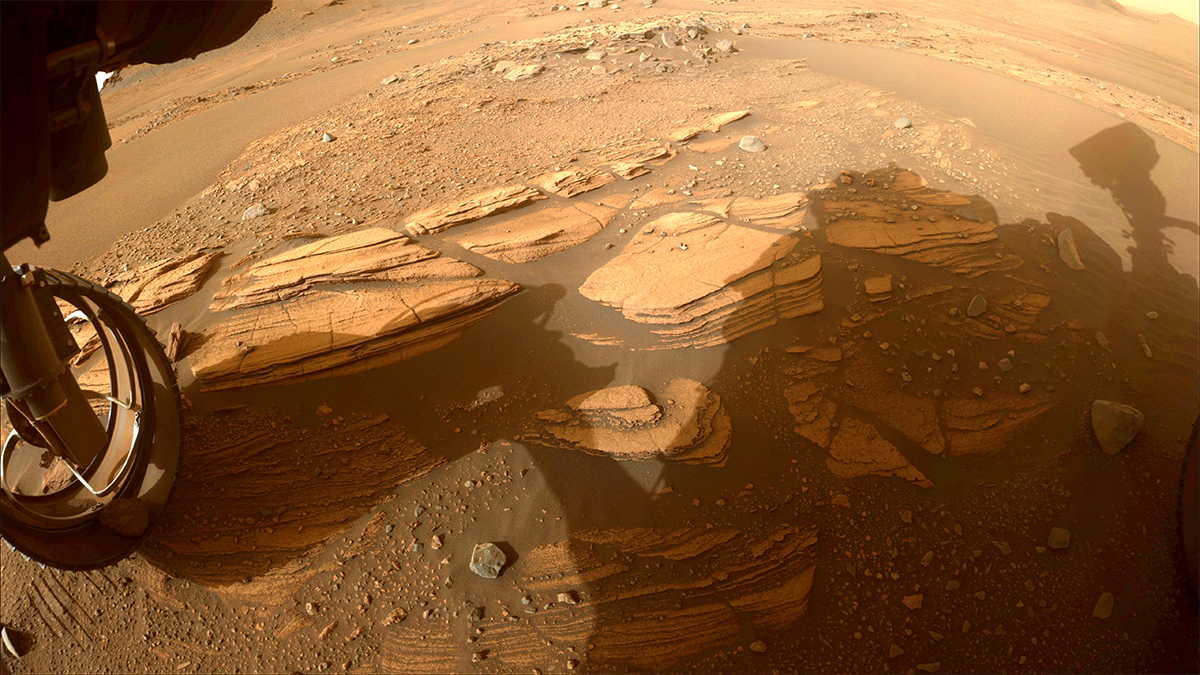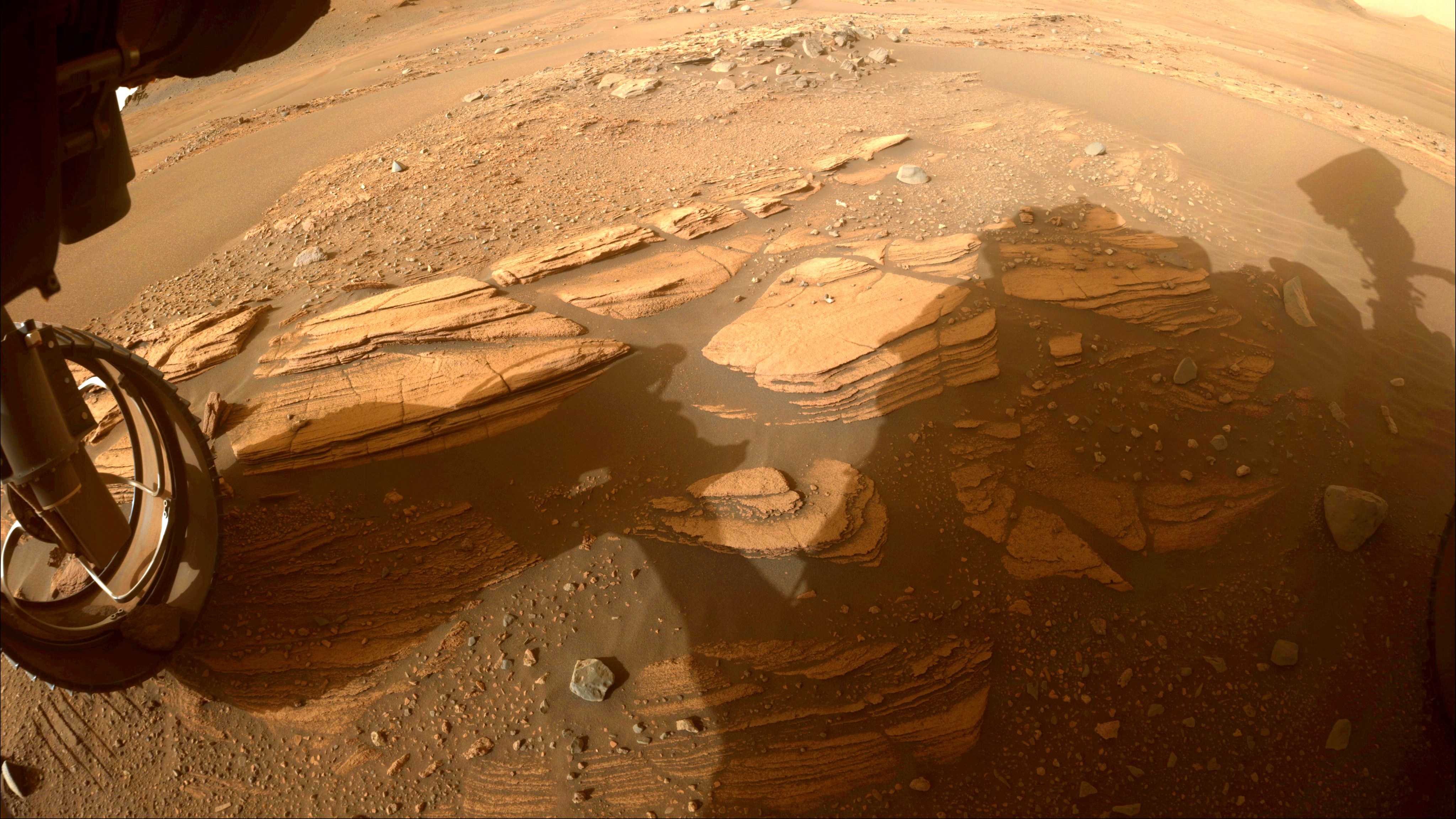Enchanted View of Jezero Rocks

| Credit | NASA/JPL-Caltech |
|---|---|
| Language |
|
This image of the “Enchanted Lake” rocky outcrop, informally named after a landmark in Alaska’s Katmai National Park and Preserve, was taken by one of the Hazard Avoidance Cameras (Hazcams) on NASA’s Mars Perseverance rover on April 30, 2022, the 424th Martian day, or sol, of the mission.
The image of the outcrop, near the base of Jezero Crater’s delta, provided the rover science team with its first up-close glimpse of sedimentary rocks. Such rocks consist of fine particles carried by the atmosphere and/or water and deposited in generally flat-lying layers, which become indurated, or turned into rock, over time.
A key objective for Perseverance’s mission on Mars is astrobiology, including the search for signs of ancient microbial life. The rover will characterize the planet’s geology and past climate, pave the way for human exploration of the Red Planet, and be the first mission to collect and cache Martian rock and regolith (broken rock and dust).
Subsequent NASA missions, in cooperation with ESA (European Space Agency), would send spacecraft to Mars to collect these sealed samples from the surface and return them to Earth for in-depth analysis.
The Mars 2020 Perseverance mission is part of NASA’s Moon to Mars exploration approach, which includes Artemis missions to the Moon that will help prepare for human exploration of the Red Planet.
NASA’s Jet Propulsion Laboratory, which is managed for the agency by Caltech in Pasadena, California, built and manages operations of the Perseverance rover.
For more about Perseverance:

